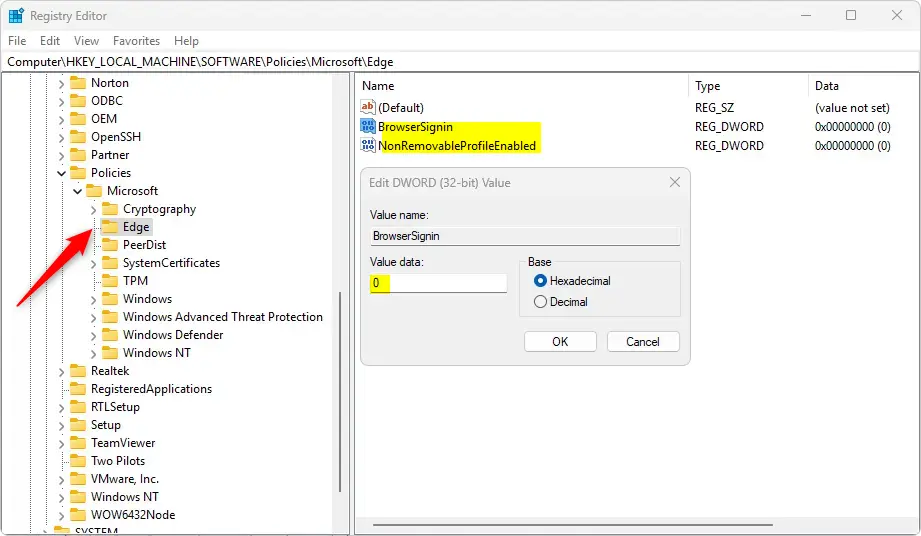This article explains enabling or disabling Microsoft Edge sign-in on Windows 11.
Microsoft Edge is the default browser in Windows 11. However, users can switch to their preferred or favorite browser anytime. Edge is based on Chromium, similar to Google Chrome and other Chromium-based browsers today.
Signing in to Microsoft Edge with a Microsoft account lets you sync your browsing data across all your other devices signed in with the same account using Edge.
You can use the BrowserSignin Edge policy to specify whether users can sign into Microsoft Edge with their account and use account-related services like sync and single sign-on.
If you disable the BrowserSignin policy, users can not sign into Edge using their Microsoft Account. You should also disable the NonRemovableProfileEnabled policy to prevent users from automatically signing in to the browser profile.
If you do not configure the BrowserSignin policy or set it to Enable, users can sign to Microsoft Edge using their Microsoft account.
Enable or Disable Sign-in to Microsoft Edge
As mentioned, an administrator can use the BrowserSignin policy to allow or prevent users from signing into the Microsoft Edge browser with their Microsoft account.
Here’s how to do it.
First, open the Windows Registry and navigate to the folder key path below.
Remember to back up your registry before making any changes or create a System Restore point as a precaution.
Computer\HKEY_LOCAL_MACHINE\SOFTWARE\Policies\Microsoft\Edge
Right-click Edge > New > DWORD (32-bit) Value and name the new DWORD BrowserSignin and NonRemovableProfileEnabled.
Double-click and open each item and set the value to 0 to disable signing into Microsoft Edge.
- BrowserSignin set value data to
0. - NonRemovableProfileEnabled set value data to
0.
This will disable signing into Microsoft Edge.

Delete both names created above to restore the default behavior and allow users to sign into Microsoft Edge with their Microsoft account.
BrowserSignin
NonRemovableProfileEnabled
You may have to reboot your computer to apply the changes.
That should do it!
Reference:
Conclusion:
Enabling or disabling Microsoft Edge sign-in through the BrowserSignin policy allows administrators to control user access to account-related features. Here are the key takeaways:
- Control User Sign-in: Administrators can restrict or allow users to sign into Microsoft Edge with their Microsoft account.
- Registry Modifications: The Windows Registry should make changes to ensure that backups and restore points are created beforehand.
- Prevent Automatic Sign-in: The NonRemovableProfileEnabled policy complements the BrowserSignin policy to prevent auto sign-ins.
- Simple Reversal: Deleting the DWORD entries restores the default behavior, allowing easy adjustments.
- System Reboot Required: A reboot may be necessary to apply any changes made to the registry.
By following these guidelines, you can effectively manage Microsoft Edge sign-ins on Windows 11.

Leave a Reply Cancel reply